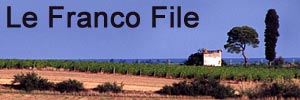We’d ticked off two of our list of tourist attractions for our first base. For our third and last day here, Francine fancied checking out the Solway Firth west of Carlisle. As a juicy bit of bait for Franco, she came up with another RSPB reserve, Campfield Marsh, on the southern side of the firth which, as well as birds of course, boasted a decent collection of dragonflies. Once again the weather didn’t look very promising for Odo hunting and the thing uppermost in Franco’s mind was getting a full tank of diesel ready for tomorrow’s drag up to Onich on the west coast of Scotland.
As usual, navigation officer Francine chose an interesting route right beside the southern shore of Solway Firth. There was a thin strip of grass then mud flats running beside the road but the water was an encouragingly long way out. Less encouraging were signs placed at regular intervals beside the road reading:
When the water reaches this point the maximum depth is one foot.
Great! Maybe we needed a Land Rover with a high-level exhaust. One sign actually mentioned a maximum depth of two feet. I hoped these signs referred to an unusual occurrence and not to a twice daily flooding caused by high tide. I had memories of watching cars play chicken with the advancing tide as it raced in to flood the passage de gois, a submersible road joining the Île de Noirmoutier to the mainland of France. Since cattle were roaming freely across this road in front of us munching the grass verges, however, I thought we’d be safe but one never really knows.
The reserve didn’t look very promising as we started into it clad in Wellington boots which we’d sensibly remembered to bring. After half a mile or so and having seen little but the ubiquitous swallows swallowing flies to fuel up for Africa, we came across a small pond surrounded by reeds whereupon Francine yelled “Odos!” Four species were flitting about here but were having to be a little circumspect flying in the stiff breeze.
 We continued on the trail seeing more of the same until we came to a boardwalk over much more open country. Time was advancing and we weren’t seeing anything new so we snapped the view, then did an about turn to start making our way back.
We continued on the trail seeing more of the same until we came to a boardwalk over much more open country. Time was advancing and we weren’t seeing anything new so we snapped the view, then did an about turn to start making our way back.
 Very shortly, Francine spotted a tandem pair of Black Darters (Sympetrum danae). While she was snapping them, I noticed, hanging up just about two feet from her right shoulder, a magnificent male Common Hawker (Aeshna juncea) in pristine condition. I begged her not to move and started snapping away myself. With a shot or two in the bag, Francine relaxed and joined in. The Hawker seemed completely unconcerned and remained motionless. This star catch was the perfect partner to the female we’d snagged just the day before at Haweswater.
Very shortly, Francine spotted a tandem pair of Black Darters (Sympetrum danae). While she was snapping them, I noticed, hanging up just about two feet from her right shoulder, a magnificent male Common Hawker (Aeshna juncea) in pristine condition. I begged her not to move and started snapping away myself. With a shot or two in the bag, Francine relaxed and joined in. The Hawker seemed completely unconcerned and remained motionless. This star catch was the perfect partner to the female we’d snagged just the day before at Haweswater.
Already a happy camper, as we were nearing the car, old hawk-eyes spotted another hawker hung up in the hedgerow; apparently I’d flushed it whilst walking past. A Southern Hawker (Aeshna cyanea) this time to bring our collection to six.
 The tide was in as we made our way back towards Carlisle. The “encouraging” signs were still visible, the road wasn’t flooded and the cows hadn’t been swept away. Neither had their many deposits on the road surface – you really need to be careful with your speed around corners, here. We stopped overlooking the firth to munch our lunch where I couldn’t help but be amused by this Royal appointment sign on a British Gas van parked beside us. “Repair and maintenance of gas lamp lighting”? I thought we’d advanced further than this. 🙂
The tide was in as we made our way back towards Carlisle. The “encouraging” signs were still visible, the road wasn’t flooded and the cows hadn’t been swept away. Neither had their many deposits on the road surface – you really need to be careful with your speed around corners, here. We stopped overlooking the firth to munch our lunch where I couldn’t help but be amused by this Royal appointment sign on a British Gas van parked beside us. “Repair and maintenance of gas lamp lighting”? I thought we’d advanced further than this. 🙂
Just for the record, our wildlife haul for the day was:
- Common Emerald Damselfly (Lestes sponsa)
- Blue-tailed Damselfly (Ischnura elegans)
- Black Darter (Sympetrum danae)
- Common Darter (Sympetrum striolatum)
- Southern Hawker (Aeshna cyanea)
- Common Hawker (Aeshna juncea)





















Recent Comments